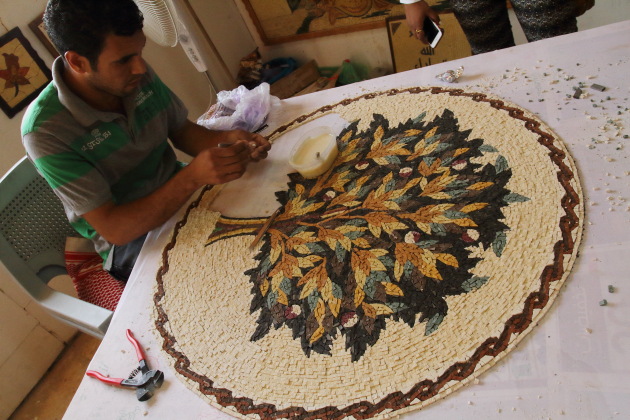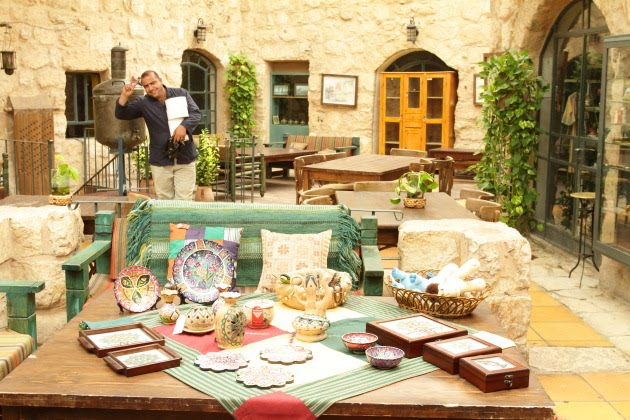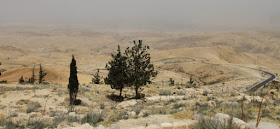
Madaba is home to many Byzantine and Umayyad era mosaics and its call to fame is its 6th century Byzantine-era Mosaic map that depicts Jerusalem and other parts of the Holy Land. Etched on the floor of the Greek Orthodox Basilica of Saint George, this mosaic art is made up of more than two million pieces of colored stone and it depicts the earliest representation of Byzantine Jerusalem, the ‘Holy city’. It depicts hills and valleys, villages and towns in Palestine and the Nile Delta.

In addition to the holy map, one can see hundreds of other mosaics dated from the 5th through the 7th centuries. These mosaic art depict common themes such as plants, flowers, animals, birds and everyday pursuit such as hunting, fishing and farming. One can see the masterpieces at the Church of the Virgin and the Apostles and the Archaeological Museum. Most of the others are still under various stages of digging and under the control of various archaeological associations.

While these mosaic ruins are definitely a top attraction of Madaba’s historical riches, I personally loved the fact that today’s people of Madaba are still practicing this ancient art form and are re-creating it based on an interesting combination of yesteryear’s and today’s art forms.

Whether you are walking through the tiny by lanes of Madaba town, exploring the small mosaic art studios spread all over the vicinity or at the institute of mosaic art and restoration, you will be able to see this delightful art form creation in full flow. It is absolutely amazing to see how different colored rocks and stones and other natural ingredients morph themselves into a quality work of art.

If you wish, you can take home some of these as souvenirs or gifts or even better get one custom designed, made and shipped for that room in your new house. If you have the moolah, there is no better architectural delight than to have a floor or a wall in your room with this ancient art from the Byzantine era.

To get a solid idea of the range of these mosaics, do see the Hippolytus hall in the archaeological park of Madaba, the mosaics at the archaeological site of Umm-ar-Rasas and the ones at the ruins of the Church of the apostles. The St.George’s Church would be a great place to get your bearings and basic information about the region, its history and its archaeological finds.

And if you feel like seeing spectacular views of this dry barren landscape, do pay a visit to Mount Nebo nearby and if you feel like getting away from history and want to relax, do visit the Ma’in hot springs located an hour away.

Whatever you do in Madaba, there is no way you are leaving without making a solid connection with its rich mosaic culture. After all, this is Jordan’s city of Mosaics and one of the hubs of an ancient art form. Do make sure that you have this place in your itinerary on your next holiday to Jordan.

How to get to Madaba: Madaba is located just 30 minutes out of the capital Amman on the King’s highway. It is also not too far away from other Jordan tourist attractions such as Bethany, Ma’in Hot Springs and the Dead Sea. It is best to have your own mode of transport if you are keen on exploring the ruins. For Madaba town, you can comfortably walk and soak in all the sights and treasures of this town.
No comments:
Post a Comment